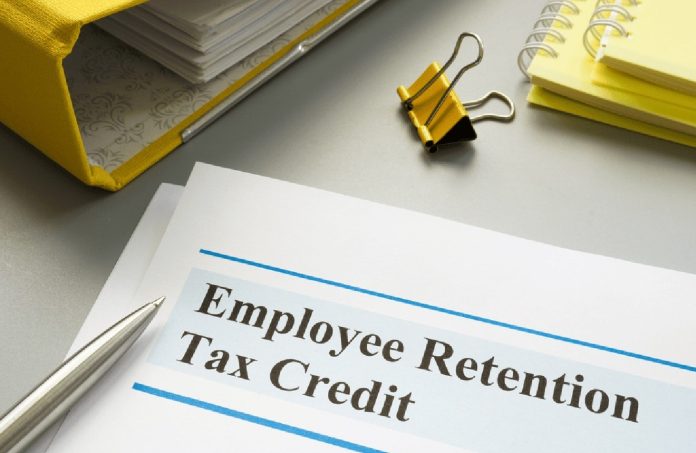Companies often have to lay off workers, reduce their operations, or even close their doors during economic downturns. For companies struggling to stay afloat in the face of these challenges, the Employee Retention Credit (ERC) is a ray of light. In this article, we’ll look at how the ERC can save a company when circumstances are rough.
The Employee Retention Tax Credit: An Overview
The Employee Retention Credit is a refundable tax credit that can be utilized by businesses to incentivize the retention of their employees during times of economic uncertainty. The CARES Act was passed by Congress after the COVID-19 pandemic to aid businesses in their recovery. Since then, the ERC has been a fantastic help to individuals who are eligible for it.
Businesses that have been entirely or partially shut down in response to government orders, or those that have seen substantial quarterly revenue declines compared to the corresponding period in the prior year, are the primary focus of the ERC.
Benefits of Employee Retention Tax Credits
The purpose of the Employee Retention Credit was to provide a safety net for companies in times of economic hardship. It helps businesses and, by implication, the communities in which they are located in numerous ways.
Financial Gain
The ERC’s most direct impact is monetary. This tax credit is refundable, so businesses can get a portion of their salary and benefit expenditures (including some health plan costs) back when they file their taxes. This is especially helpful during economic downturns.
The ERC improves a company’s liquidity by crediting wage payments, making it easier for the organization to satisfy its continuing financial commitments including rent, utility, and supplier payments. Having access to this cash flow can mean the difference between weathering a recession and having to close your doors for good.
Benefits from retaining employees
The ERC’s ability to facilitate employee retention is a further key advantage. The workforce is a company’s most valuable asset, making it especially important to ensure continuity in personnel throughout economic downturns.
The ERC helps firms prevent or reduce layoffs by easing the financial burden of paying employees. This allows companies to maintain their highly educated and trained workforces so they are ready to return to full productivity as soon as the economy recovers. Instead than cutting relationships and rehiring and retraining employees when the economy improves, this is a much more effective solution.
Contributions to Society
The effects of the ERC are not limited to the confines of any one company. The ERC is essential to community economic stability because it helps businesses keep employees on the payroll. Retaining employment lowers the unemployment rate, which keeps money in consumers’ pockets. When residents spend money at local establishments like shops and restaurants, it has a positive domino impact on the economy as a whole.
Sustainable Growth for Companies
Taking advantage of the ERC is important for a company’s long-term success and stability. Companies that are able to weather economic storms without losing key employees or shuttering their doors gain resilience and flexibility, making them better placed to capitalize on economic recoveries.
Tips for Filling Out the Employee Retention Credit Application
Any company hoping to take advantage of the ERC must meet the IRS’s strict eligibility requirements. A government order might cause a complete or partial shutdown, and a decline in sales would be another negative consequence.
Your total eligible salary and health plan expenses must be reported on your quarterly employment tax return in order to apply for the ERC. In addition, it is crucial to keep detailed and well-organized records of payroll, taxes, and employee benefits.
How to Deal with Challenges
Despite the ERC’s potential to save firms during tough economic times, its advantages are sometimes eclipsed by myths and red tape. Here, we’ll discuss these difficulties and misconceptions and offer advice on how to overcome them.
Myth No 1: The ERC Is Too Difficult to Understand
The widespread belief that the ERC application procedure is overly difficult and time-consuming is unfounded. It’s true that you’ll need to fill out some paperwork and learn the rules and regulations, but don’t let that put you off. In times of economic hardship, in particular, the payoffs might be substantial.
Myth No 2: Only Extremely Affected Companies Are Eligible
It’s also often believed that the ERC is available only to companies who have been forced to shut down entirely as a result of the recession. Although the ERC focuses on companies in crisis, it is not exclusive to those in such a position. A company is also eligible for the ERC if its operations have been temporarily halted or its gross revenues have significantly decreased.
Myth No 3: Fear of Audits and Sanctions
A company may be hesitant to submit an ERC claim if it anticipates being audited or receiving a penalty. The Internal Revenue Service (IRS) can audit tax returns, but you have nothing to worry about if your claims are legal and you have kept meticulous records.
Seek Professional Advice and Keep Accurate Records to Overcome Obstacles
Accurate information is the first step in overcoming these obstacles. Get in touch with a tax expert, accountant, or financial planner who is familiar with the ERC. Their knowledge and experience will be invaluable as they lead you through the steps and explain the requirements, benefits, and potential repercussions to your organization.
In addition, it is critical to keep thorough records. Keep records of your company’s activity, including any shutdowns or decreases in activity that occurred because of government orders. If you see a large drop in your gross receipts compared to the same period in past years, it is important to keep accurate financial records showing this. Keep track of all health plan payments and wages paid, as this information will be required when submitting your ERC claim.
Future of Employee Retention Credit
The ERC has been extremely helpful during the recent COVID-19 outbreak, but its continued existence is contingent on continued government oversight and policy modifications. To make the most of the ERC, businesses and professionals must remain current on all relevant information.
The fact that the ERC was able to help during the recent recession gives faith that it will be a useful tool in the face of future economic downturns.
Final Note
The Employee Retention Credit is a lifeline for firms who are having trouble staying afloat in today’s unpredictable economic climate. It has shown to be an effective strategy for helping firms weather economic downturns by providing financial relief and making it easier to retain employees.



































